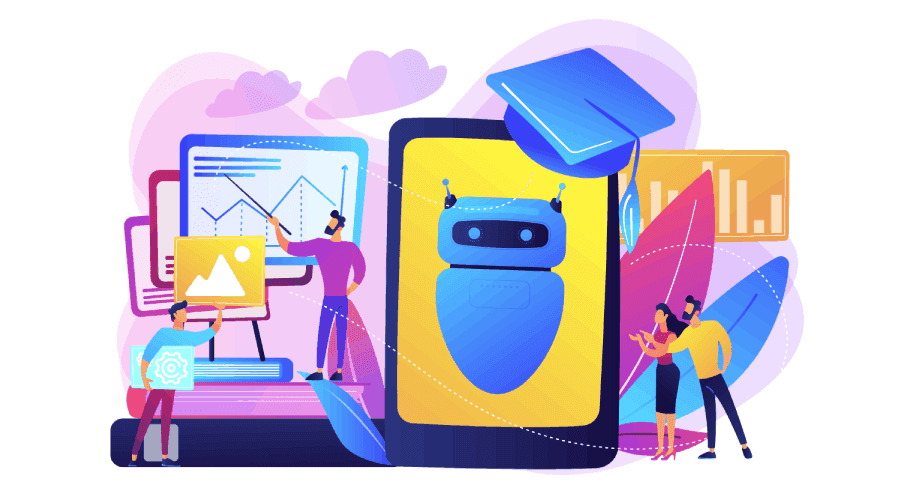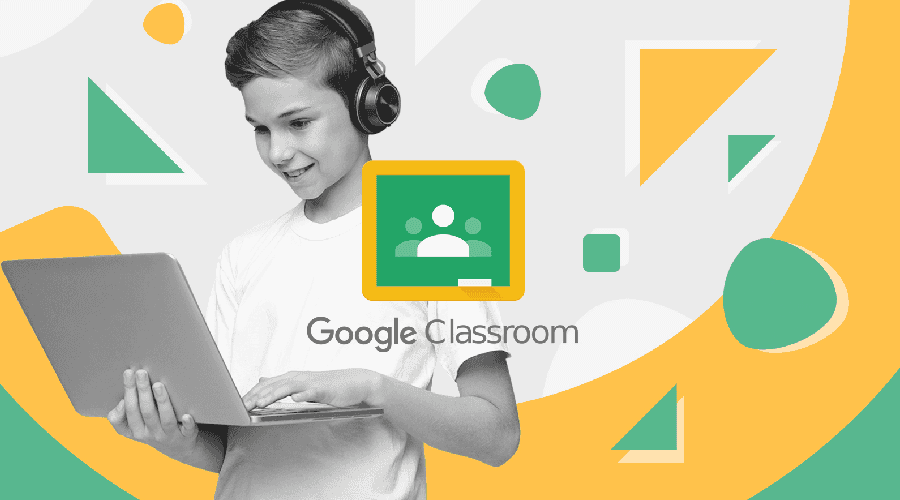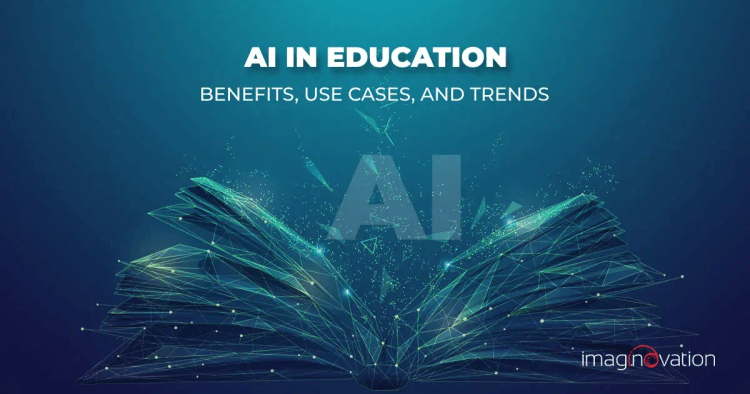Artificial intelligence isn't a new kid on the block. Though, AI still invokes sci-fi visions. The reality is that AI use in many sectors has grown by over 270% over the last four years, and the educational landscape isn't untouched.
AI in education is a phenomenal trend and is accelerating progress. With AI in education projected to expand at over 10% CAGR from 2023 to 2032, the future of education is exciting. AI-powered solutions in the educational landscape have the potential to enhance learner experiences.
Tag along! In this article, we will explore the benefits, use cases, and future prospects of AI in education.
Understanding AI in Education
AI-powered education is moving towards the intelligence era, ushering outstanding learner experiences. AI helps transform the educational ecosystem, enhance education quality and efficiency, and bring equity. Plus, it supports educators and students with new and innovative tools, shaping inclusive learning and helping learners thrive and step into an exciting future.
It's not a Zen koan that the penchant for technology will never change. The emerging technologies will innovate and offer even more brilliant solutions. Here's an exciting insight—the Global AI in education market was valued at USD 1.82 billion in 2021.
Furthermore, analysts expect to expand at a CAGR of 36.0% from 2022 to 2030. The figures reiterate that with the advancement in technology, AI-powered solutions in education will continue to spur the EdTech landscape to leverage benefits and accelerate learners' growth and learning.
AI-infused education will expect the industry to be purpose-driven, transparent, and equitable. A framework can help guide future development and improve outcomes. Let's look at some basic principles.
- Augment learning experiences: AI technologies must help augment new experiences and create new behavior models.
- Address needs of learners: AI in education must ensure it is purpose-driven. The use of AI technologies should address the community's needs.
- Ensure educational equity and inclusion: AI tools in education must actively support equity and enhance the educational experience of each learner.
- Ensure security and privacy: AI-fueled solutions in the educational landscape must ensure privacy and security.
- Leverage transparency: AI tools must support incorporating transparency and empower learners. Plus, it must assist in responsible disclosure regarding AI systems.
- Ensure blending of best practices: AI in education should offer a platform to blend in best-trending practices.
- Boost equal access: AI tools must ensure that all learners have equal access, supporting students with special needs through assistive technologies.
- Promote critical thinking: The use of AI will be a necessary skill in today's and tomorrow's working life, and thus, it should encourage learners to gain a critical understanding of AI use.
- Foster real-world application and global perspective: AI in education must ensure honing a global mindset as students engage in real-world problems and experiential learning activities.
- Focus on a sustainable future: With the evolution of AI, the solutions must focus on adaptability, scalability, and sustainability in the rapidly changing economy.
- Demystify opportunities and risks of new AI technologies: The new technologies must help improve teaching and learning and offer a platform to resolve the concerns of the stakeholders.
- Support refining of algorithms: The new technologies must support the tweaking and refining of algorithms to ensure accurate results.
Bottom line: The potential of EdTech is inarguably the most impactful with emerging technologies, such as AI.
Though AI has been in the educational landscape, it has gained traction, due to the growing inclination towards personalized learning. With several successful use cases of how top companies use AI on their platforms in the educational sphere, it is one of the biggest trends that must be explored.
AI in EdTech has encouraging trends such as learning analytics, personalized learning, AR and VR, and intelligent chatbots. The time is ripe to unlock new opportunities in the industry and leverage its potential to shape a future of education that benefits all learners.
Maximizing the investment in AI-powered solutions means safeguarding the future of EdTech. Why? You're right—future trends highlight that cutting-edge technology will continue contributing to the educational landscape and attain phenomenal growth.
The Benefits of AI in Educational Settings
For years the education sector and the general realm of it were unchanged. Schools delivered traditional education with the help of teachers who spoke to the students and utilized charts and diagrams to demonstrate concepts and principles.
With the evolution of technology, this otherwise unaffected space has also finally begun to catch up. There are many things about the conventional education system that have changed. Let’s take a look.
Differentiated and Individualized Learning
Here's the thing—everyone learns things differently. Every learner has a unique learning style, and the same method of instruction won't be effective. In such a context, differentiated learning works well. It is the process where a learner's education is customized based on their individual learning style.
In this type of learning, the instruction is tailored to meet individual student’s learning needs, preferences, and goals. While this has been an area where educators have been trying to develop solutions, AI allows a massive level of differentiation. AI-powered solutions can support intelligent instruction design and digital platforms that use AI to provide learning, testing, and feedback to various learners. It helps identify gaps in knowledge, offering plug-in topics as necessary.
What's more—AI is evolving rapidly, and it may soon be possible to read a learner's expressions to check if they are struggling to comprehend a subject and modify the course to cater to the learner.
Personalized Learning

Personalized learning is often confused with individualized or differentiated learning. However, it is an amalgamation tailored to the preferences and interests of various learners. It aims to customize learning for each individual student's strengths, needs, skills, and interests.
In this type of learning, the student gets involved in creating learning activities, drawing heavily from a student’s personal interests and innate curiosity. Acknowledging the uniqueness of each learner, fosters an environment where students can learn at their own pace, teaching them to manage their own learning and take control and ownership of it.
Improved Accessibility
AI plays a critical role in improving the accessibility of education. It is vital to incorporate and augment accessibility because it means ensuring all learners, including those with disabilities and other learning challenges, can access all requisite learning aids.
The game-changing solutions can address the unique needs and challenges of learners with special needs. For example—incorporating AI-driven speech recognition, text-to-speech technology, or AI-driven assistive technologies (such as screen readers, braille displays, and communication devices) and more with AI tools is easy. Plus, AI extends its reach by supporting the multilingual needs of non-native speakers and language learners. Thus, linguistic inclusivity ensures that a diverse learner population can readily access educational content with ease.
Intelligent Feedback and Assessment
Here's the thing—formative feedback can be augmented with AI. It has always been an effective tool for students and educators, and with AI tools, it is easy to offer automatic and intelligent feedback. Instant and real-time feedback can help boost the learning curve and support learners in reaching their full potential.
Smart Content Creation
AI-powered content creation tools can facilitate the generation of content in an instant. For example—some AI tools can help churn out summaries, outlines, and even full-length articles based on keywords or topic titles. What's more—smart content is where you can generate highly personalized content. With more relevant content, learners will engage with the content more, resulting in better experiences.
Proctoring
With the increase in online exams and tests, a proctoring mechanism is necessary to monitor the test takers. AI proctoring systems can offer an excellent solution to monitor and evaluate test-takers behavior in real-time. Furthermore, an alert system can be inbuilt where the exam administrator can be alerted on the detection of any suspicious activity.
24x7 Assistance and Conversational AI
Conversational AI can help create an ecosystem where systems and applications can converse with humans via AI chatbots and IVR. AI-driven chatbots and virtual assistants can help students receive personalized advice and improve productivity and learner satisfaction. In an educational context, it helps to improve efficiency, reduce costs, and enable communication between students and the systems on a valuable 24x7 channel. The immediate responses and reduced wait times help cater to students instantaneously, improving their assimilation.
Automation of Administrative Tasks
School instructors, educators, and administrators are often piled with heaps of paperwork, grading materials, and more. With AI, automating operations is easy, and it can help improve dull, repetitive operations, which include processing grades, student attendance, admitting new students, etc. Educators find more time to devote to quality teaching with AI, reducing the repetitive and monotonous duties.
Ethical Decision-making and Bias Detection
AI is equipped with advanced algorithms, which helps to decrease bias. Whenever there is a bias, it can affect fairness and equity, which is an essential cornerstone in education. With the power of AI in the educational context, every learner now gets the opportunity to thrive, free from biases or barriers. AI can take a grander role in supporting decision-making. With its promise of ethical consideration with the adoption of AI, one can look forward to more integration into education.
Real Life Examples of AI in Education
AI in education is revolutionizing the education sector and shaping a more dynamic learning environment. With AI tools, it is possible to model a new era of learning and transform the face of education. Let's look at some success stories and learn from the top global brands.
Google Classroom

Google Classroom is an excellent example of how an online learning platform can offer students more personalized learning, real-time feedback, and customized resources. It allows teachers to design and assign tasks that support automated grading. The insights help to boost performance and growth.
Furthermore, powerful tools such as Google Translate and Google Scholar enhance learners' and educators' experiences. The AI algorithms help research relevant content and churn out content from authoritative sources.
Duolingo
Duolingo has a language learning application, which is a fantastic example of an AI-based learning platform. The app's personalized learning approach includes an initial positioning test that scans the skills of the user. Further, there's a progressive readjustment of the proposed activities that are difficulty-based and based on the learner's previous performance and results achieved. The app offers vocabulary drills, interactive tests, individualized lessons, etc. The final goal is to help learners maintain an optimal level of challenge and stay engaged with the points-based reward system.
Coursera
Coursera is AI-powered and offers adaptive learning paths, course recommendations, and automated assessments. It is helpful as learners receive customized suggestions and timely feedback.
The AI algorithms help analyze user preferences and performance data to suggest relevant courses that can tweak course content and offer instant grading and feedback. The AI-fueled courses help to augment the learning experience and boost engagement with incredible outcomes.
Nuance
Nuance has some incredible solutions based on cutting-edge AI. The app offers a seamless ambient experience, revolutionizing how educators and learners learn speech recognition software called Dragon Speech Recognition, which can accurately transcribe around 160 words per minute. Nuance's technology benefits users with accessibility needs that allow them to navigate documents by voice.
StepWise
AI-powered educational platform StepWise, which US-based Querium developed, revolutionized how students learn STEM subjects. The platform uses AI-based analytics to assess learners’ progress accurately and offers personalized instructions for individual learning needs.
The platform blends the use of AI with machine learning algorithms to uncover concepts that are difficult to comprehend for students to understand them better. Moreover, the app offers a comprehensive set of tools, including adaptive quizzes, real-time feedback, and interactive lessons, ensuring that students stay engaged while learning.
Challenges and Ethical Considerations
Beyond opportunities, it is critical to know the challenges and ethical considerations that learners and educators may face. The insights will help prepare for the successful implementation of AI-powered solutions.
1. Developing a Comprehensive View of Public Policy on AI for Development
In the context of the inclusion of AI in education, there needs to be robust policy support. When developing public policy for AI in education, there still needs to be a lot to be done in the coming decade.
Leaders in the educational ecosystem need financial and ethical assistance to focus on facilitating learners to grow in an AI-fueled educational landscape. Currently, AI advancements in schooling are majorly supported by private sectors, such as IBM, Pearson, Coursera, and LightSide, while the government is still making early attempts to manage them.
Meanwhile, countries including Singapore, Germany, South Korea, Argentina, and others have forged partnerships between industry and academia to share content material and financial resources. Ultimately, public policies must collaborate at international and national levels to foster an ecosystem of AI that serves sustainable development.
2. Ensuring Equity and Inclusion in AI in Education
With the development of AI, there is a distinctive impact on countries around the globe. Thus, the least developed countries are at huge risk of suffering from emerging technological, economic, and social divides. The major obstacles include a lack of basic technological infrastructure and basic conditions for implementing new strategies to incorporate AI to boost learning.
3. Preparing Teachers for AI-powered Education

Teachers are at the frontline of education; thus, it is vital to facilitate their learning of digital skills. The upgrades will help educators to use AI in a pedagogical and noteworthy way. Plus, AI developers need to build sustainable solutions that reflect real-life environments. The solutions must build a scaffold in cognition, learning, and assessments.
In this context, several countries are supporting the national EdTech industry's efforts to empower educators and schools by promoting innovation and intensifying their efforts towards this vision.
4. Develop Quality and Inclusive Data Systems
With heaps of data in the education landscape, one of the major concerns is the quality of data. Thus, improving the data collection systems and systematization efforts is essential. However, one of the chief drawbacks in low- and middle-income countries is concerning the technologies covered for capturing data, which might prove to be expensive.
5. Ethics and Transparency
When implementing AI in the education system, ethical and societal concerns must be addressed. The challenge occurs when using personal data. Developers must ensure the protection of individual privacy preferences and personally identifiable information. Typically, a transparent data collection system will protect individual data and maintain privacy and ownership of users' data.
6. Basic Technological Infrastructure in Developing Countries
The developed countries often lack basic technological infrastructure, such as:
- ICT hardware availability
- Modern electrical equipment
- Data costs
- Consistent internet facility
- Lack of ICT skills
- Funding constraints
- Insufficient research infrastructure
Thus, the state must ensure that requisite steps are taken to initiate new strategies that augment AI learning facilities in educational institutions.
7. Enhancing Research on AI in Education
AI in education can enhance the learning process, and be further augmented with continuous research. In the coming years, research on AI in education will increase. However, the education sector must substantially consider educational research both for practice and policy-making.
8. Implementing Ethical Practices and Standards
Ethical standards and practices help put ethical frameworks and guidelines into operations. Further, it can spell concrete actions and measures to ensure the ethical performance and behavior of AI systems in education. Here's a good example—ethical practices and standards can include data quality accuracy or privacy and data protection policies.
Also Read: AI in Manufacturing: Benefits, Use Cases, and Examples
Future Prospects of AI in Education
As technologies evolve and reshape how we learn and teach, AI will continue to make significant inroads in education. It will keep creating exciting opportunities for both students and educators.
Many educational institutions have already overcome the digital divide, and with AI technology, more institutes are bound to join the bandwagon. The future of education will revolutionize traditional learning methods and promote lifelong learning. AI will ensure bridging educational disparities and offer high-quality resources that are accessible to all. Data-driven insights are bound to empower educators to tweak, refine, and boost their teaching methods while fostering global collaboration and communication.
The way educational institutes are using AI is probably one of the most significant leaps in the positive transformation that education has seen. In this new era of learning, AI will be centered on a humanistic way of helping learners flourish, thrive, and grow.
Wrapping Up
AI forms a holistic part of the educational landscape today. It has a profound impact on everything in education—the way we learn, engage, and grow. It’s time leaders embrace the revolutionizing power and vast potential of what AI can offer and build solutions that can boost learning. The new capabilities of AI can accelerate further in the educational landscape and help you achieve phenomenal success!
Build AI-Powered Solutions with Imaginovation
Don’t settle for a solution that does not empower your learners and educators in your educational institutions! So, if you want to develop a robust AI-powered solution, talk to us.
We are an award-winning web and mobile app development company in Raleigh with remarkable experience developing game-changing AI-fuelled solutions in education.
Let’s talk.
Ready to build an app, but not sure where to start?
We've got you covered. Click the button below to get started.





